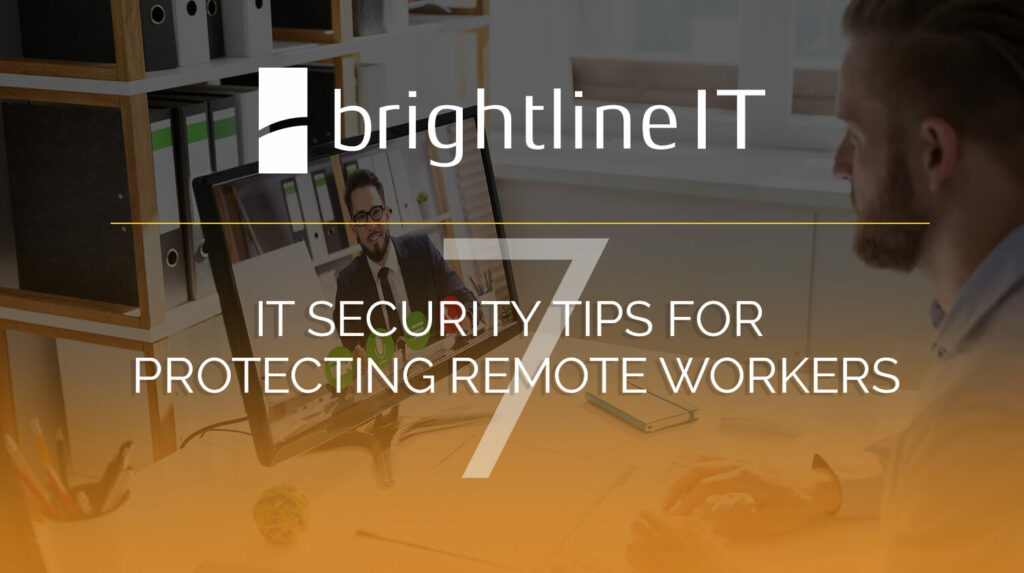How businesses can improve their IT security while their employees work remotely.
With each year, IT security for businesses becomes more complex as new security threats emerge and new technologies adapt to combat them. However, these threats don’t just come from new malware, viruses or exploitable software vulnerabilities. They also come from changes in human behavior. The recent shift of workers out of the office and into personal remote working locations is a significant concern.
In an office environment, businesses can control most security variables, including who has physical access to the location, how the IT infrastructure is connected, and the hardware and software being used. However, when employees go home, they fall back on IT systems that were probably purchased based on cost or convenience and may not have been properly hardened to resist cyberattacks.
Remote work seems to be the way of the future—certainly during the Covid-19 pandemic. Even when the pandemic subsides, it is likely many workers will continue to work remotely. Given these expectations, it’s time for businesses to prepare their employee’s remote work environments to be sufficiently secure.
1. Keep work data on work computers/systems.
If your employees are handling any sensitive work data, they should work from company devices, or Remote Desktop sessions. Personal computers are often not maintained or protected effectively and often are shared among members of a household, which could result in a member mistakenly sharing or losing sensitive data. Keeping control of devices used and managing access and storage of company data is critical.
2. Deploy and manage enterprise-class Anti-Virus solution on devices
Most of us who work on computers are familiar with antivirus protection and associated firewalls. The former identifies and isolates suspicious programs, while the latter prevents unauthorized files from being downloaded and installed. Unfortunately, even users who know what they are can run into trouble if they fail to update their security software, and many are known to disable firewalls in order to download a blocked file, and then fail to re-enable them. If your employees are using work computers, you can change administrative privileges to prevent them from being able to disable your security software while also managing updates remotely.
3. Keep operating systems and software up to date.
One of the most common IT vulnerabilities that viruses and other malware exploit is through outdated software and operating systems. No piece of software is ever completely free of vulnerabilities, which is why software designers are constantly working to find the vulnerabilities and patch them before they can be hacked. Users often avoid running software updates, as they mean shutting down and restarting the computer. Having updates managed remotely can prevent employees from putting them off.
4. Enable multi factor authentication.
Multi factor authentication is a solution that requires two different types of input from a user before allowing access to a device. There are three general forms of verification inputs: something a person knows (their password), something a person owns (like a cell phone), or something a person is (biometric data). If a user has to provide both a password and another type of identification, then a hacker can’t access the account just by cracking the password. While it’s not flawless, when it comes to effectiveness and ease of execution, it’s hard to beat multi factor authentication.
5. Use a VPN for secure network access.
Like its name implies, Virtual Private Networks (VPNs) use public infrastructure to create encrypted networks that function the way a private network might. Once a VPN is established, the data that an employee shares over that network is secure. Like everything, to maintain your remote IT security, you will need to keep software and firmware up to date.
6. Set up security measures on home routers.
Many home users never bother to change the default factory settings for their home routers. Employees should be instructed to take extra steps in securing their home routers, including changing the admin privileges, enabling the router firewall, and changing the password.
7. Educate your employees in phishing scams and other security threats.
Almost any security precaution you take can be undone by an employee who acts carelessly or in ignorance. The stories of high-profile hacks which were enabled by someone clicking on the wrong link or opening the wrong email are seemingly endless. And as much as most of us want to believe that we would never fall for a bad phishing scam, set a weak password, or open sensitive files on our personal computers, anything can happen when someone is tired, in a rush, or simply unaware of the risks to behave with caution.
Regularly train your employees in IT network security Brighton and make sure your employees understand that it is a priority for your company. The more aware your employees are knowledgeable about security, the more they will think twice before taking it lightly.
Brightline can help with remote security and maintenance for your distributed workforce.
For years, Brightline has enabled clients to work remotely through Remote Desktop solutions. We also secure and monitor company owned devices – whether they are at the office or home. Talk to us about the right Remote Office solutions for your business. We can help you make sure all your remote workers have the right IT security systems in place to protect your business.
